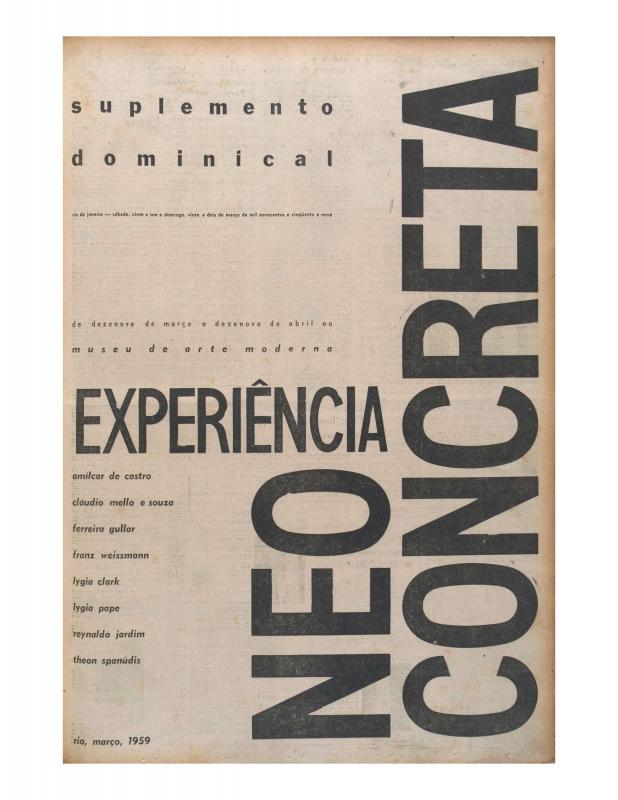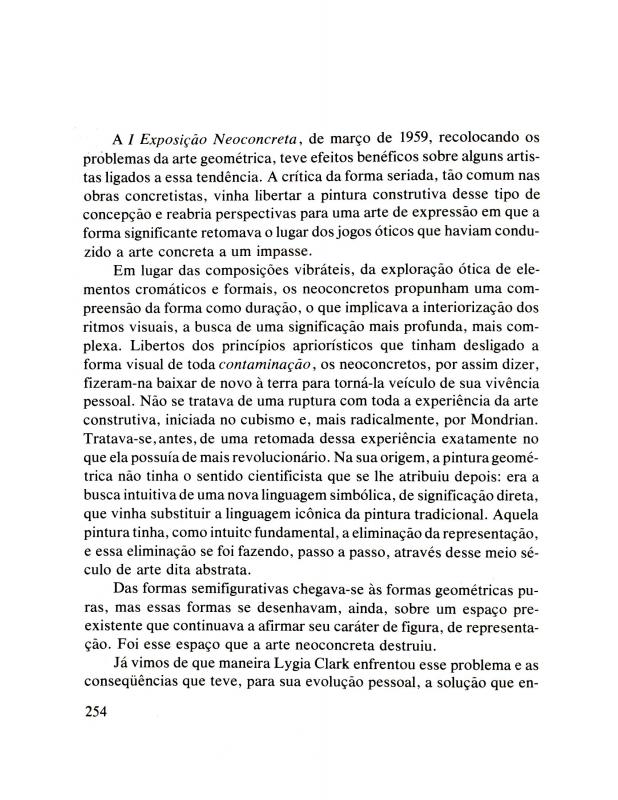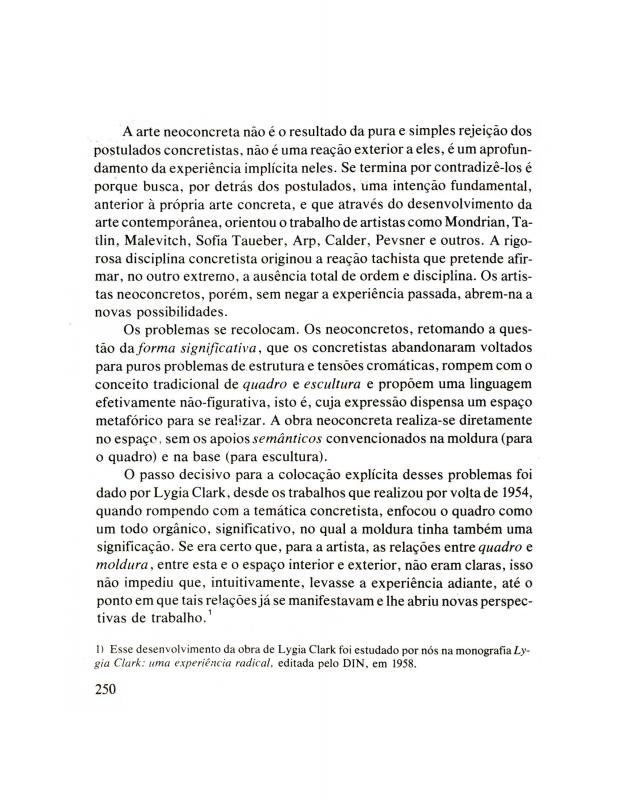This article is one of a series entitled "Etapas da Pintura Contemporánea" that was published between March 1959 and October 1960 in the Suplemento Dominical do Jornal do Brasil. In this collection of articles, the critic and poet [José Ribamar] Ferreira Gullar (b. 1930) discusses non-figurative geometric art from Cubism to Neo-Concrete art, in order to determine the latter’s historical roots. He therefore takes the essential step of reevaluating the international Constructivist movements he had previously written about in March 1959 in his “Manifesto Neoconcreto” [see the ICAA digital archive, doc. no. 1110328].
In “Tentativa de compreensão,” Gullar discusses the critiques of Concrete art he had previously outlined in his manifesto, dated March 22, 1959. In this article, he explains the seriousness of his theoretical reservations concerning Gestalt, and endorses the phenomenological ideas expressed by the French philosopher Maurice Merleau-Ponty as an obligatory referent to be used when challenging the development of Brazilian Concrete art.
The author subsequently published his weekly essays in a later collection with a different title: Etapas da arte contemporánea (Do cubismo à arte neoconcreta) (Rio de Janeiro: Editora Nobel, 1985). Among the essays that are relevant to this one, see “Cor e estrutura-cor” in which Gullar compares the chromatic experiments conducted by Hélio Oiticica and Aluísio Carvão with Lygia Clark’s works(doc. no. 1091219); see also another relevant essay by this same author, “Do quadro ao não-objeto,” in which he follows the evolution of Clark’s work from her Concrete works to her Neo-Concrete independence (doc. no. 1091272).



